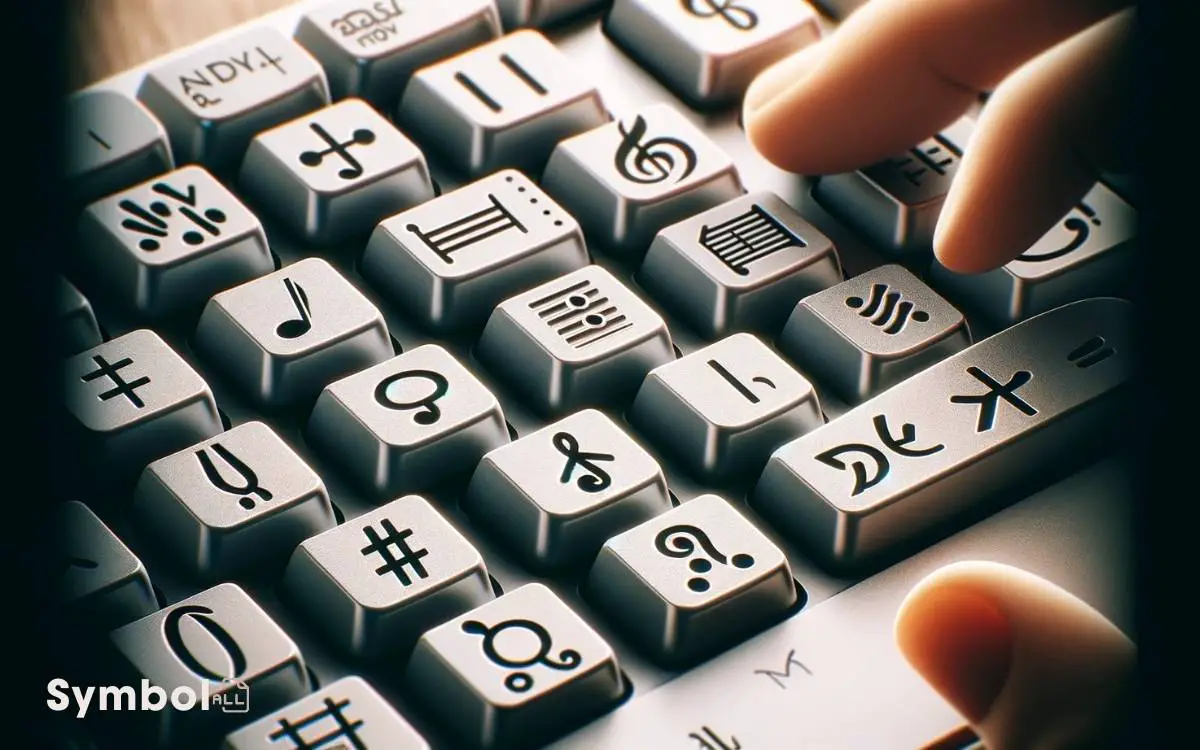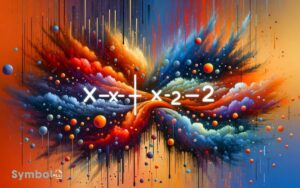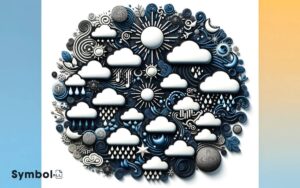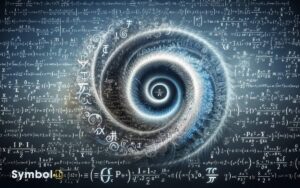Symbols Used to Represent Sounds: Explains!
You navigate a complex landscape of symbols to represent sounds, each system meticulously developed through cultural evolution.
From the intricate hieroglyphs to the precise International Phonetic Alphabet (IPA), these symbols bridge the gap between abstract sounds and tangible written forms.
Phonetic alphabets, for instance, ensure each spoken nuance finds a corresponding mark, facilitating accurate speech transcription.
Similarly, musical notation and digital systems like ASCII and Unicode extend this precision to musical expression and global digital communication.
These diverse methods, whether for speech or music, embody the universal human impulse to catalog and share sounds. Exploring further unveils the depths of these symbol systems. They serve as bridges between cultures, capturing the nuances of individual expression and collective creativity. In modern contexts, platforms like digital streaming services have reimagined these systems, providing tools for universally accessible communication. For instance, understanding notations and metadata within playlists becomes essential, with guides such as “apple music symbols explained” helping users navigate the intricacies of digital soundscapes.

Key Takeaways
14 Phonetic Symbols and Sounds Representation
| Symbol | Sound Represented | Use Case Example | Phonetic Description |
|---|---|---|---|
| /a/ | Open front unrounded vowel | Cat /kæt/ | Similar to ‘ah’ sound |
| /iː/ | Close front unrounded vowel, long | Machine /məˈʃiːn/ | Similar to ‘ee’ in ‘see’ |
| /ʌ/ | Open-mid back unrounded vowel | Cup /kʌp/ | Similar to ‘u’ in ‘cup’ |
| /ɛ/ | Open-mid front unrounded vowel | Bed /bɛd/ | Similar to ‘e’ in ‘bed’ |
| /θ/ | Voiceless dental fricative | Thing /θɪŋ/ | Similar to ‘th’ in ‘thing’ |
| /ʃ/ | Voiceless postalveolar fricative | She /ʃiː/ | Similar to ‘sh’ in ‘shoe’ |
| /tʃ/ | Voiceless postalveolar affricate | Chair /tʃɛər/ | Combination of ‘t’ and ‘sh’ sounds |
| /ʒ/ | Voiced postalveolar fricative | Vision /ˈvɪʒən/ | Similar to ‘s’ in ‘pleasure’ |
| /ŋ/ | Voiced velar nasal | Sing /sɪŋ/ | Similar to ‘ng’ in ‘sing’ |
| /r/ | Alveolar approximant | Red /rɛd/ | Similar to ‘r’ in ‘red’ |
| /dʒ/ | Voiced postalveolar affricate | Judge /dʒʌdʒ/ | Similar to ‘j’ in ‘juice’ |
| /ɔɪ/ | Diphthong | Boy /bɔɪ/ | Combination of ‘o’ in ‘bought’ and ‘i’ in ‘it’ |
| /aʊ/ | Diphthong | Out /aʊt/ | Combination of ‘a’ in ‘cat’ and ‘oo’ in ‘food’ |
| /ɪər/ | Rhotacized long vowel | Near /nɪər/ | Similar to ‘ear’ in ‘near’ |
Early Sound Symbols
Throughout history, numerous cultures have independently developed symbols to represent sounds, providing a foundation for the complex systems of written language we observe today.
These early sound symbols, evolving from pictographic depictions to more abstract representations, mark a pivotal transition in human communication.
You’ll find that in examining these developments, a pattern of innovation emerges, driven by the need to accurately convey spoken language through written form.
This evolution underscores the ingenuity of ancient civilizations in creating efficient methods to record and transmit information.
By analyzing these symbols, you’re not just exploring the origins of written language; you’re delving into the collective human endeavor to bridge communication gaps, a pursuit that has continually shaped the way societies interact, learn, and preserve their heritage.
Phonetic Alphabets
You’ll find that phonetic alphabets serve a crucial role in the transcription of sounds, offering a standardized method to represent speech sounds beyond the constraints of traditional writing systems.
Understanding the basics of phonetic systems provides a foundation for comprehending how these symbols capture the nuances of spoken language.
The exploration of common phonetic symbols will reveal their significance in linguistic analysis, allowing for a precise documentation of speech patterns across different languages.
Basics of Phonetic Systems
Understanding the basics of phonetic systems, or phonetic alphabets, is crucial for accurately transcribing the myriad sounds of human speech.
These systems offer a standardized set of symbols to represent each distinct sound, or phoneme, that you might encounter across languages.
Unlike the regular alphabets used for writing, phonetic alphabets are designed to capture the exact pronunciation, free from the ambiguities and regional variations that written language often contains.
You’ll find that mastering these systems allows for a precise, unambiguous documentation of speech sounds, which is indispensable for linguistic analysis, language learning, and speech therapy.
It’s the foundation upon which the study of phonetics is built, enabling scholars and practitioners alike to communicate about the sounds of speech with accuracy and clarity.
Common Phonetic Symbols
Having established the importance of phonetic systems for capturing the exact pronunciation of speech sounds, we now examine the common phonetic symbols used within these alphabets.
The International Phonetic Alphabet (IPA) stands as the most widespread system, offering a comprehensive set of symbols to represent each distinct sound.
Vowels are categorized based on tongue position and lip shape, with symbols like [i] for the ‘ee’ sound in ‘see’ and [a] for the ‘a’ sound in ‘cat.’
Consonants are classified by place and manner of articulation; for example, [t] denotes a voiceless alveolar stop, produced by airflow obstruction at the alveolar ridge.
Each symbol in the IPA is meticulously designed to provide a one-to-one correspondence between sound and notation, ensuring precision in linguistic analysis and transcription.
Hieroglyphs and Pictograms
You’ll observe that the evolution of ancient writing systems marks a significant transition in human communication, moving from simple pictograms to the more complex hieroglyphs.
This progression underscores a pivotal shift in how societies encoded and interpreted meanings within symbols, attributing to them layers of linguistic and cultural significance.
Furthermore, distinguishing between hieroglyphs and pictograms is crucial, as each serves different functions in the conveyance of ideas, reflecting broader societal and cognitive developments.
Ancient Writing Evolution
The evolution of ancient writing, notably through hieroglyphs and pictograms, marks a pivotal shift in how societies documented and communicated complex ideas.
Initially, these symbols served basic communicative functions, representing objects or concepts directly linked to the physical world.
However, as civilizations advanced, the need for a more efficient method to record transactions, laws, and narratives became apparent. This necessity drove the gradual transformation of writing systems.
Hieroglyphs and pictograms evolved from mere representations to embody abstract ideas, enabling a more nuanced expression of thought. This evolution reflects a profound understanding of the symbolic potential of writing, laying the groundwork for the development of alphabets.
Through this transition, ancient societies not only enhanced their ability to document and preserve knowledge but also fundamentally altered the structure of communication, setting the stage for future linguistic advancements.
Symbol Meaning Interpretation
Delving into the realm of hieroglyphs and pictograms reveals a complex process of interpreting symbols that once bridged the gap between concrete realities and abstract concepts.
You’re navigating a linguistic landscape where symbols aren’t mere representations; they’re intricate systems of communication, embodying both sound and meaning.
These symbols, deeply rooted in their respective cultures, demand a nuanced understanding of context, tradition, and linguistic evolution.
To decipher them, you must immerse yourself in the ancient worldview, recognizing that each symbol encapsulates a multifaceted narrative.
This interpretative journey isn’t linear; it’s a scholarly endeavor that marries linguistic analysis with archaeological insights, requiring you to parse through layers of historical, cultural, and phonetic significance.
Such an analysis isn’t just academic; it’s a gateway to understanding the intellectual prowess of ancient civilizations.
Hieroglyphs Versus Pictograms
Navigating the intricate landscape of ancient communication, you encounter two distinct yet interconnected systems: hieroglyphs and pictograms, each with its unique linguistic and cultural imprint.
- Hieroglyphs are complex symbols that can represent sounds, objects, or ideas, often used within formal texts and convey a deeper, multifaceted meaning.
- Pictograms, on the other hand, are simpler and more direct, depicting a specific object or concept through a visual representation that’s universally understandable.
The contextual usage of hieroglyphs often demands a comprehensive understanding of cultural and religious nuances, unlike the straightforward nature of pictograms.
Both systems, while serving the function of communication, highlight the diversity in human expression and the evolution of written language, marking a foundational aspect of our shared history.
Morse Code
Exploring Morse Code reveals a fascinating system where dots and dashes represent letters and numbers, enabling long-distance communication without the need for spoken words or written language.
You’ll find that this method, developed in the 1830s by Samuel Morse and Alfred Vail, has significantly impacted global communication, particularly in maritime and military fields.
Its simplicity allows for transmission over telegraphs, light signals, and even sounds, making it universally applicable.
Analyzing its structure, each character in Morse Code is uniquely defined by a sequence of signals, ensuring minimal confusion and error in transmission. This precision and adaptability highlight its enduring relevance.
Moreover, Morse Code’s efficiency in conveying complex messages with minimal elements exemplifies an elegant solution to the challenge of distance communication, underscoring its scholarly significance in the evolution of human interaction.
Braille System
Just as Morse Code revolutionized long-distance communication through its unique system of dots and dashes, the Braille System similarly transformed the way individuals with visual impairments interact with text.
Developed by Louis Braille in the 19th century, this tactile writing system enables reading and writing through raised dots.
Key aspects of the Braille system include:
- Universality: Adaptable across languages, proving its global applicability.
- Scalability: Extends beyond basic literacy to include mathematical and scientific notation.
- Accessibility: Facilitates independence in learning and communication.
- Innovation: Continuously evolves with technology, integrating with digital Braille displays.
Understanding the Braille System not only highlights advancements in assistive technologies but also underscores the importance of inclusive communication methods in fostering a more accessible world.
Musical Notation
While the Braille System provided a tactile means for reading and writing, musical notation offers a visual language for capturing and conveying musical compositions with precision and universality.
This system, consisting of symbols placed on a staff, represents pitch, rhythm, and expression, enabling composers to transcribe sounds that can be universally interpreted by musicians.
Notes, clefs, and other signs serve as the building blocks, each with specific roles in dictating how a piece should be performed.
The staves, with their horizontal lines and spaces, correspond to different pitches, while note values indicate rhythm and duration. Dynamics and articulations further guide the performance’s emotional and technical aspects.
Musical notation’s standardized format ensures that, regardless of geographic or cultural boundaries, the composer’s intent is preserved and communicated effectively.
ASCII and Unicode
Transitioning from the realm of musical notation, ASCII and Unicode emerge as pivotal technologies that facilitate the representation of text in computers by assigning unique codes to letters, digits, and symbols.
These systems are foundational for digital communication, ensuring that text appears consistently across various devices and platforms.
- ASCII, developed in the 1960s, primarily supports English characters.
- Unicode, a more comprehensive system, includes characters from most of the world’s writing systems.
- Unicode’s extensive character set supports over 143,000 symbols, promoting global communication.
- Both systems work by mapping unique numbers to characters, enabling computers to store and display text.
Understanding ASCII and Unicode is essential for grasping how digital devices represent and manipulate text, a critical component of modern communication.
Sign Languages
Sign languages, distinct yet universally expressive, serve as the primary means of communication for over 70 million deaf and hard-of-hearing individuals worldwide.
Unlike spoken languages, which rely on the auditory channel, sign languages utilize a visual-manual modality, encompassing gestures, facial expressions, and body movements.
They’re not universal; each country or region typically has its own sign language, with its unique syntax, lexicon, and grammar, reflecting the cultural diversity of the Deaf community.
This diversity highlights the adaptability and richness of human communication methods, challenging the notion of sound as the sole vehicle for language.
Moreover, sign languages are recognized for their complex spatial and temporal structures, offering insights into the cognitive processes underlying language comprehension and production.
Digital Sound Representation
In the realm of digital communication, sound is meticulously encoded into binary data, allowing for its reproduction and manipulation across various digital platforms.
This process involves several crucial steps:
- Sampling: Capturing snapshots of the sound wave at regular intervals.
- Quantization: Assigning a numerical value to each sample, based on its amplitude.
- Encoding: Converting these numerical values into binary code.
- Compression: Reducing the size of the binary data for efficient storage and transmission.
Conclusion
You’ve journeyed through the evolution of symbols representing sounds, from ancient hieroglyphs to modern digital formats. It’s akin to watching a seed grow into a sprawling tree, each branch a different method of communication.
This exploration highlights the ingenuity of human expression, utilizing everything from tactile Braille to complex Unicode.
Your understanding of these systems now reflects a deep appreciation for the diversity and precision of sound representation, showcasing the rich tapestry of human communication.





